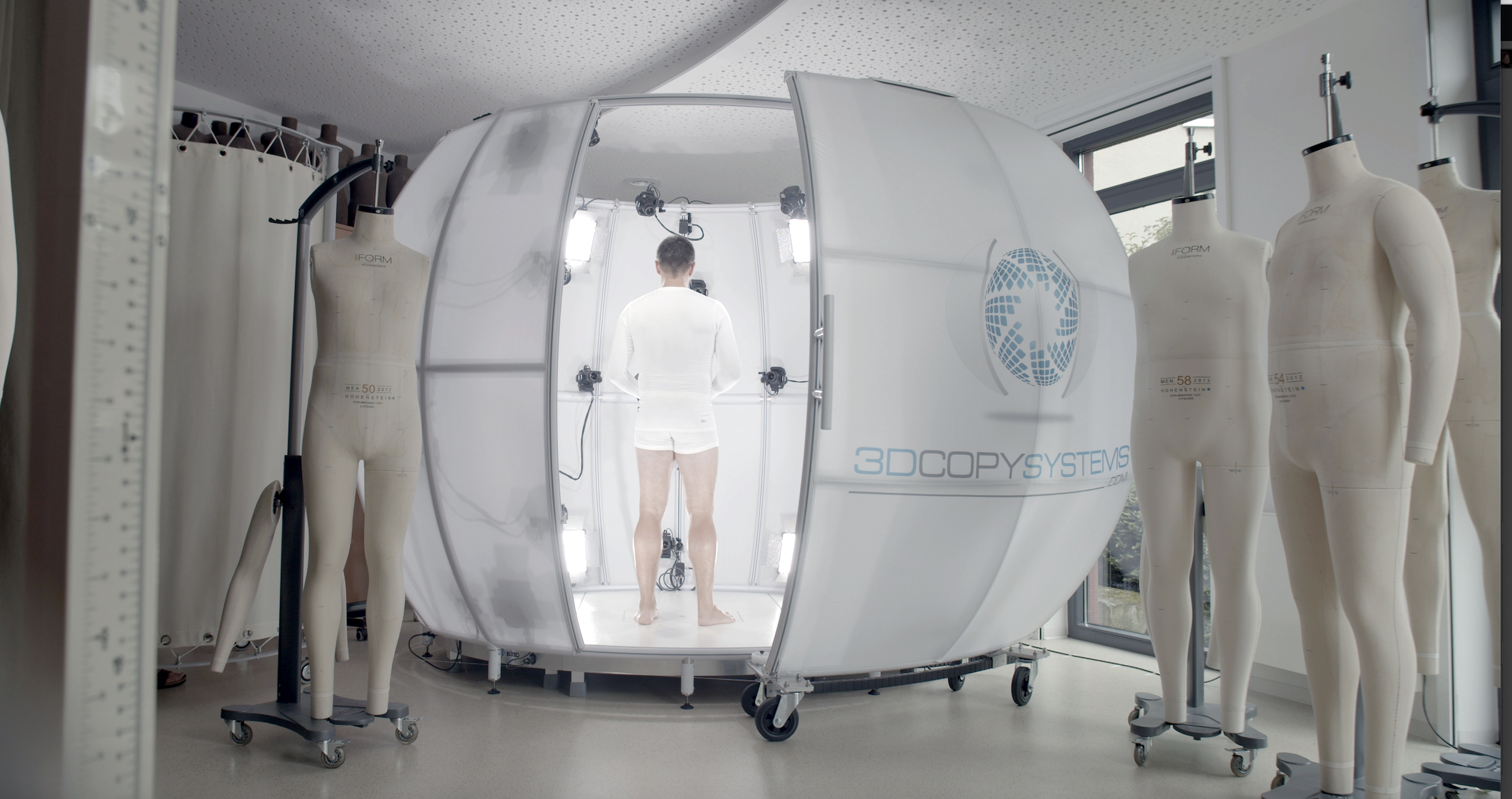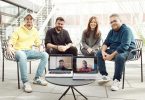Dorfner, a family-owned Bavarian business that mines and refines industrial minerals, is using data and AI to tie its past to its future and transform its business model.
The company, which was founded in 1895 and owns one of the most significant kaolin and silica sand deposits in Germany (see the photo), makes functional fillers for paints, composite materials and construction materials. Today the family-owned holding company has subsidiaries in Poland and in the U.S. and a joint venture in India.
Like many of Europe’s SMEs, Dorfner found it itself facing several challenges, including succession issues and the fact that there is very little room for growth in its core businesses. Mirko Mondan, a serial entrepreneur, was recruited from the outside by the family two years ago as acting CEO with a mission to strengthen the core while finding new sources of business, paving the way for the next generation of the family to eventually take over.
As part of a new corporate strategy, the company has started using cutting-edge tech to transform itself from a company offering a sole product and raw material to one that additionally offers services tied to its core business that help its clients solve supply chain shortages and become greener. As a first step it is applying AI to the fillers in paint to create alternative formulations and make them more sustainable.
Dorfner’s journey offers valuable insights into how Europe’s traditional businesses can build effective innovation strategies, leapfrog into the digital age, and make climate-friendly products.
Forging An Innovation Strategy
The first item on Mondan’s agenda was to forge an innovation strategy. The strategy he settled on is based on two pillars, sustaining innovations at the core and introducing radical innovations outside of current markets. While the ideation process is important it is not sufficient. Access to a network and to talent is crucial to innovating outside the core business, says Mondan. “When you are from an old economy business you can’t just transform the whole organization and hire the right tech people,” he says. You need to tap into a network.”
During a ride in a dump truck at Dorfner’s mining facility, one of Mondan’s friends, who runs a family-owned business, shared his experience working with UnternehmerTUM, the Technical University of Munich’s Center for Innovation and Business Creation, which was set up 20-years-ago as a not-for-profit limited company with a focus on building a bridge between startups and established companies. UnternehmerTUM’s Business Creators program ticked all the right boxes, says Mondan, as it is specifically geared to helping SMES widen their traditional business models and help them use open innovation to think outside the box and move from the why to the how.
Dorfner did not just sign up a few key executives. It chose people from across its business. “I picked different functions and areas, people I thought would become good change agents of the transformation, and then instructed each one of them to go out and tell five people in the company what they learned along the journey,” says Mondan. “That is how we cascaded it down.”
In order to meet the planned growth path of the company, new sources of value had to be developed to extend the existing business and/or tap totally new sources of revenues. “We were thinking too narrowly,” says Mondan. “We needed to unlearn things and open our minds.” The company’s definition of innovation was rebuilt. Rather than just focusing on new products the company started building entirely new business models or process innovations.
During the joint project Dorfner employees were guided to think beyond their traditional business fields, with the help of a structured process workshops at UnternehmerTUM. Dorfner employees separated into groups and focused on the company’s strengths to understand the past and then tried to make a link to new fields and focus on “how we, a mid-sized German company in a traditional field, could make use of our data to get ahead of our competitors and create new services,” says Mondan.
While Dorfner was engaged in this process its big customers started approaching the company because hundreds of the raw chemicals they need to make their products were not available due to supply chain issues. Customers wanted to know if Dorfner could create alternative formulations.
It was an “aha” moment for Dorfner. Like many traditional companies much of its industry knowledge was stored either in the heads of their long-term employees or in spread sheets. During the workshop the idea that surfaced that its data about chemical formulations could be gathered and organized in a database and AI applied to that data to help with reformulations that would serve as alternatives or be more sustainable.
The company thought it would have to build its own AI software platform, but it found a Silicon Valley company that had already built an AI platform for the materials and chemicals industry.
It took about six months for the company to get the right data sets in place.“ The crucial lever is identifying which value you want to deliver,” says Mondan. “Then you know which data you need.”
“When our data was in Excel spreadsheets no one was using it,” he says. “Now we make use of our treasure. We took data from the last 25 years and made it digital. Over the next five years 30% of our people will retire so this is a way of ensuring we don’t lose the solid base from our past.”
In coatings alone Dorfner has 30,000 data points on materials. “When a request for a filler formulation is received Dorfner will use the AI to run a simulation. By bringing it into a platform and applying AI we can now offer a new formulation service to all our clients around the globe,” says Mondan. If a client uses a small fraction of a material in its formulations and that material is no longer available Dorfner can run a simulation, come up with the five best hits, test them in its lab and propose a solution within a matter of days, he says. “We are experts in functional fillers. AI helps speed up our R &D and promises to give us category leadership 5-10 years from now.”
The new strategy is also expected to allow Dorfner and its clients’ products to become greener. “We are currently shipping materials all over the globe,” says Mondan. “My dream is to tell customers that we can sell them a new formula for the functional filler field and point out the three local materials they can use. This way we stay in the game by offering the best formula, with the best quality, at the lowest cost, with the lowest environmental footprint.”
Dorfner, which uses the minerals it mines to produce a critical component in paints, is starting by offering its clients AI-based recipes for functional fillers in paints that are cheaper and more sustainable. It is only one of nine innovative business or service models that Dorfner identified during its nine-month program with UTUM.
Thanks to the workshops and outside tech help supplied by UnternehmerTUM and the Silicon Valley tech company “we now have the tools to turn one promising project into action,” says Mondan. “It is a relief for the organization to know that we can think big and create a future for Dorfner that has its origin in our core business. “
BELIEVING IN THE OUTCOME
Dorfner’s journey is an example of how traditional family-owned businesses can successfully use digital technologies to remain relevant and competitive, says Tim Lüken, Senior Manager of UnternehmerTUM’s Business Creator.
“Often the problem for SMES is they have a bias about where to go,” says Lüken. The goal of UnternehmerTUM’s program is to enable SMEs to think about the future in a structured manner, come up with new ideas and believe in the outcomes, he says. To make it work top management needs to do what Mondan did: “become a spokesperson for the outcome even before the project begins, by mobilizing every employee from the beginning, and inviting everyone interested to join,” he says.
Mondan says he was surprised by how motivated employees are. “Once they understand what we are trying to do their reaction is ‘I’m in. I want to learn how to do this,” he says. “They have understood this platform will be crucial for us.”
As a next step Dorfner and UnternehmerTUM say they will continue their journey and jointly create a new business model focused on sustainability.
This article is content that would normally only be available to subscribers. Sign up for a four-week free trial to see what you have been missing.







